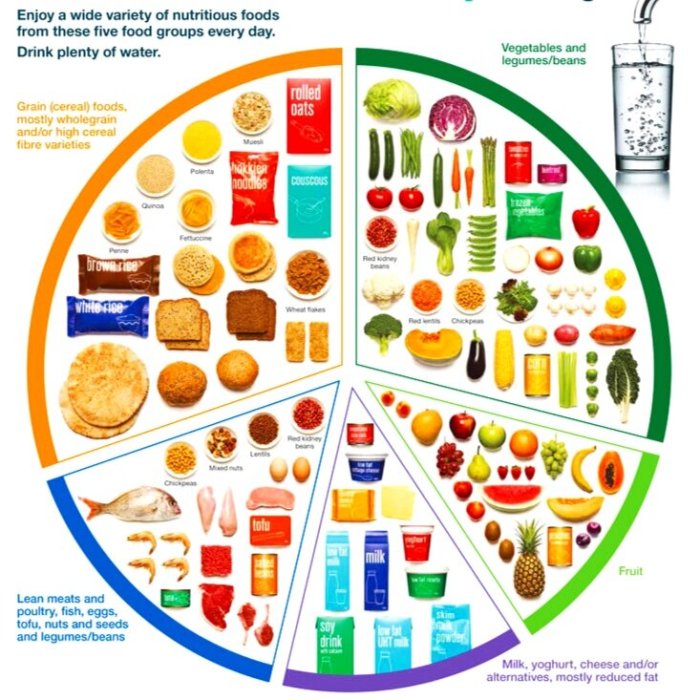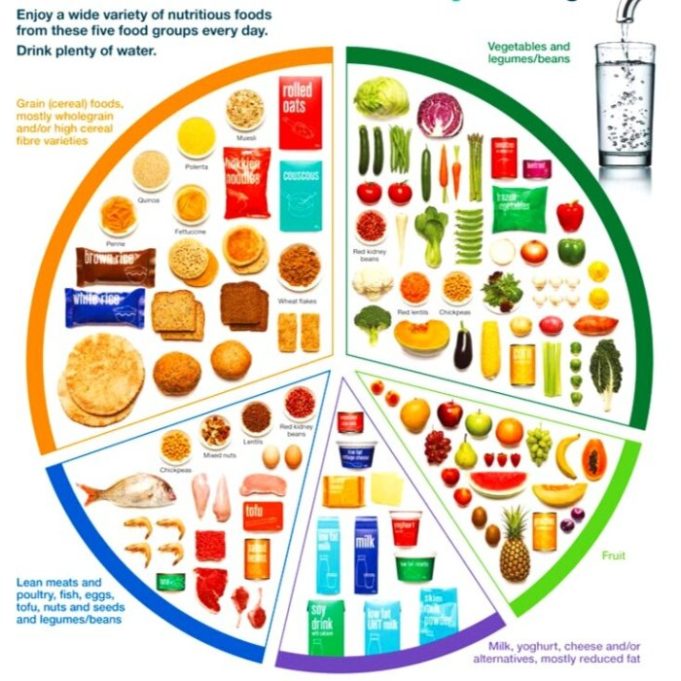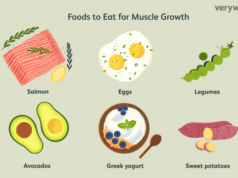Recommended Dietary Allowance for different lifestyles is a crucial aspect of maintaining optimal health and well-being. It acknowledges that dietary needs vary significantly based on factors like age, gender, activity level, and health conditions. Understanding these individual differences allows us to create personalized nutrition plans that cater to specific needs, ensuring adequate intake of essential nutrients for optimal function and disease prevention.
The Recommended Dietary Allowance (RDA) serves as a guideline for the daily intake of essential nutrients. It is a dynamic system that has evolved over time, incorporating new scientific discoveries and understanding of nutritional requirements. This evolution ensures that the RDA remains relevant and reflects the latest scientific evidence.
Introduction to Recommended Dietary Allowances (RDAs)
The Recommended Dietary Allowance (RDA) is a guideline that suggests the average daily intake of essential nutrients for healthy individuals of different ages, sexes, and life stages. These recommendations aim to prevent nutrient deficiencies and promote overall health and well-being.
The RDA serves as a benchmark for individuals and healthcare professionals to ensure adequate nutrient intake. It provides a framework for developing dietary plans, assessing nutritional status, and identifying potential deficiencies.
History and Evolution of RDA Guidelines
The concept of RDAs originated in the early 20th century, driven by the need to address widespread nutritional deficiencies. The National Research Council (NRC) in the United States played a pivotal role in establishing the first set of RDAs in 1941.
Over time, the RDA guidelines have undergone significant revisions and updates to reflect advances in scientific understanding of nutrition and health. These updates have incorporated new research findings, changing dietary patterns, and evolving health concerns.
Importance of RDAs for Maintaining Health and Well-being
Adequate nutrient intake is essential for maintaining optimal health and well-being throughout life. RDAs play a crucial role in:
- Preventing Nutrient Deficiencies: RDAs ensure that individuals consume sufficient amounts of essential nutrients, such as vitamins, minerals, and protein, to prevent deficiencies that can lead to various health problems.
- Promoting Optimal Growth and Development: Adequate nutrient intake is particularly important during childhood and adolescence, as it supports growth, development, and cognitive function.
- Maintaining Immune Function: Essential nutrients, such as vitamin C and zinc, play a vital role in supporting a healthy immune system and protecting against infections.
- Reducing Chronic Disease Risk: Maintaining a balanced diet that meets RDA recommendations can help reduce the risk of developing chronic diseases, such as heart disease, stroke, type 2 diabetes, and certain types of cancer.
Factors Influencing RDA Variations: Recommended Dietary Allowance For Different Lifestyles

The Recommended Dietary Allowances (RDAs) are not fixed values but rather guidelines that vary based on several factors. Understanding these influencing factors is crucial for individuals to tailor their diets effectively to meet their unique needs.
Age
Age plays a significant role in determining dietary requirements. As individuals progress through different life stages, their nutritional needs change. For instance, growing children and adolescents require higher intakes of certain nutrients, such as protein, calcium, and iron, to support their rapid growth and development. On the other hand, older adults may need to adjust their dietary intake to account for age-related changes in metabolism and absorption.
Gender
Gender differences also influence dietary needs. For example, women of reproductive age require higher iron intake due to menstrual blood loss. During pregnancy and lactation, women have even greater demands for certain nutrients, such as iron, folate, and calcium. Men, on the other hand, generally have higher energy requirements due to their typically larger muscle mass.
Pregnancy and Lactation
Pregnancy and lactation are periods of increased nutritional demands. The developing fetus and breastfeeding infant require a substantial supply of nutrients from the mother’s diet. The RDA for essential nutrients like iron, folate, calcium, and vitamin D significantly increase during pregnancy and lactation. For instance, the recommended daily intake of iron during pregnancy is 30 mg, compared to 18 mg for non-pregnant women.
Physical Activity Levels, Recommended Dietary Allowance for different lifestyles
Physical activity levels directly impact energy expenditure and, consequently, dietary needs. Individuals who engage in regular and vigorous exercise require higher calorie intake to fuel their workouts and support muscle recovery. They also need increased amounts of certain nutrients, such as protein and carbohydrates, to support their physical performance and overall health.
Health Conditions
Specific health conditions can influence dietary recommendations. For example, individuals with diabetes may need to adjust their carbohydrate intake to manage blood sugar levels. Those with kidney disease may need to limit their protein intake to reduce stress on their kidneys. People with celiac disease need to avoid gluten, while those with lactose intolerance may need to limit dairy products.
Genetics
Genetics can influence individual dietary needs. Some people may have a genetic predisposition to certain health conditions, such as high cholesterol or hypertension, which may necessitate dietary modifications. For example, individuals with a genetic predisposition to high cholesterol may need to reduce their intake of saturated and trans fats.
RDA for Different Lifestyles
The Recommended Dietary Allowance (RDA) is a set of guidelines that Artikel the amount of essential nutrients individuals need to maintain good health. However, these requirements can vary based on several factors, including lifestyle, age, and gender. This section delves into the specific RDAs for different lifestyles, highlighting the variations in macronutrients and micronutrients required for optimal health.
Macronutrient RDAs for Different Lifestyles
The daily recommended intake of macronutrients (carbohydrates, proteins, and fats) can differ based on activity levels. The following table provides a general guideline for the RDAs of these macronutrients for various lifestyle categories:
| Lifestyle | Age Group | Carbohydrates (g) | Protein (g) | Fats (g) |
|---|---|---|---|---|
| Sedentary | 18-30 | 2,000-2,500 | 50-75 | 50-75 |
| 31-50 | 1,800-2,200 | 50-75 | 50-75 | |
| 51+ | 1,600-2,000 | 50-75 | 50-75 | |
| Moderately Active | 18-30 | 2,500-3,000 | 75-100 | 75-100 |
| 31-50 | 2,200-2,700 | 75-100 | 75-100 | |
| 51+ | 2,000-2,500 | 75-100 | 75-100 | |
| Highly Active | 18-30 | 3,000-3,500 | 100-150 | 100-150 |
| 31-50 | 2,700-3,200 | 100-150 | 100-150 | |
| 51+ | 2,500-3,000 | 100-150 | 100-150 |
Micronutrient RDAs for Different Lifestyles
The RDAs for micronutrients, including vitamins and minerals, can vary depending on dietary choices and lifestyle.
| Lifestyle | Vitamin D (IU) | Iron (mg) | Calcium (mg) | Vitamin B12 (mcg) |
|---|---|---|---|---|
| Vegan | 15-20 | 18 | 1,000 | 2.4 |
| Vegetarian | 15-20 | 18 | 1,000 | 2.4 |
| Omnivore | 15-20 | 8 | 1,000 | 2.4 |
Dietary Recommendations for Specific Lifestyles
Dietary recommendations can be further tailored for individuals with specific lifestyle choices or needs. For example:
– Athletes: Athletes require higher protein intake to support muscle repair and growth. They also need increased carbohydrate intake for energy production.
– Pregnant Women: Pregnant women require increased iron, folate, and calcium for fetal development.
– Individuals with Specific Dietary Restrictions: Individuals with dietary restrictions, such as allergies or intolerances, need to carefully plan their diets to ensure they meet their nutritional needs.
Practical Applications of RDAs
RDAs are not just numbers on a chart; they are powerful tools for making informed choices about your diet and overall health. Understanding how to use RDAs can help you create a personalized meal plan that meets your unique needs and goals.
Using RDAs to Plan a Healthy Diet
RDAs provide a roadmap for creating a balanced and nutritious diet. Here’s a step-by-step guide on how to use them:
- Identify your individual needs: Start by determining your RDA for each nutrient based on your age, sex, activity level, and any specific health conditions. You can find these values in reliable sources like the Dietary Guidelines for Americans or consult with a registered dietitian.
- Choose foods that provide your RDAs: Select a variety of foods from all food groups to ensure you are meeting your daily needs. Use the USDA’s MyPlate as a visual guide to help you create balanced meals.
- Track your intake: Keep a food diary or use a food tracking app to monitor your daily intake of essential nutrients. This will help you identify areas where you may need to make adjustments.
- Make gradual changes: Don’t try to overhaul your diet overnight. Instead, focus on making small, sustainable changes over time. For example, start by adding a serving of fruits or vegetables to each meal.
- Consult with a professional: If you have specific dietary concerns or health conditions, consult with a registered dietitian or other qualified healthcare professional. They can provide personalized advice and help you create a meal plan that meets your individual needs.
Meal Plans Tailored to Different Lifestyles
RDAs can be applied to create customized meal plans for various lifestyles. Here are some examples:
- Active individuals: Athletes and people with physically demanding jobs require higher RDAs for calories, protein, and carbohydrates. Their meal plans should focus on nutrient-dense foods that provide energy and support muscle recovery.
- Vegetarians and vegans: Vegetarians and vegans need to pay close attention to their intake of vitamin B12, iron, calcium, and zinc, as these nutrients are often found in animal products. Their meal plans should include a variety of plant-based sources of these nutrients, such as fortified foods, legumes, nuts, and seeds.
- Pregnant and breastfeeding women: Women who are pregnant or breastfeeding have increased nutrient needs to support their own health and the growth and development of their baby. Their meal plans should emphasize foods rich in iron, folic acid, calcium, and vitamin D.
- Older adults: As people age, their nutrient needs may change. Their meal plans should focus on foods that are easy to digest and provide adequate protein, calcium, and vitamin D. They should also prioritize foods rich in fiber to support digestive health.
Role of RDAs in Weight Management and Disease Prevention
RDAs play a crucial role in weight management and disease prevention.
- Weight management: Meeting your RDAs for calories and macronutrients (protein, carbohydrates, and fats) can help you maintain a healthy weight. By consuming a balanced diet, you can avoid overeating and promote satiety, which can help you manage your weight effectively.
- Disease prevention: Eating a diet that meets your RDAs for essential nutrients can help reduce your risk of chronic diseases, such as heart disease, stroke, type 2 diabetes, and some types of cancer. For example, consuming adequate amounts of fruits, vegetables, and whole grains can help lower cholesterol levels and reduce inflammation, both of which are risk factors for heart disease.
Incorporating RDAs into Daily Life
Here are some practical tips for incorporating RDAs into your daily life:
- Read food labels: Pay attention to the nutritional information on food labels and choose products that are low in saturated fat, sugar, and sodium, and high in fiber and essential nutrients.
- Cook more meals at home: This gives you more control over the ingredients and allows you to adjust recipes to meet your RDAs.
- Pack your own lunches: This helps you avoid unhealthy restaurant options and allows you to choose foods that align with your dietary goals.
- Make healthy swaps: Instead of reaching for processed snacks, opt for fruits, vegetables, nuts, and seeds. You can also make healthier substitutions in your favorite recipes, such as using whole wheat flour instead of white flour or substituting olive oil for butter.
- Stay hydrated: Drink plenty of water throughout the day to support overall health and hydration.
Future Directions in RDA Research
The Recommended Dietary Allowances (RDAs) are constantly evolving as our understanding of nutrition and its impact on health improves. Ongoing research is critical for refining existing RDAs and developing new recommendations that meet the needs of a diverse population.
Emerging Trends in Dietary Recommendations
The field of nutrition is dynamic, and new research constantly challenges existing dietary recommendations. Several emerging trends are shaping future RDAs, influencing public health strategies and individual dietary choices.
- Personalized Nutrition: The concept of personalized nutrition acknowledges that individuals have unique genetic, metabolic, and lifestyle factors that influence their dietary needs. Research is focusing on developing personalized RDAs based on individual biomarkers and genetic profiles, enabling tailored dietary recommendations for optimal health outcomes.
- Precision Nutrition: Precision nutrition builds upon personalized nutrition by integrating data from various sources, such as wearable devices, dietary tracking apps, and genetic testing, to provide highly specific and individualized dietary guidance. This approach aims to optimize nutrient intake and minimize the risk of chronic diseases by tailoring recommendations to individual needs and preferences.
- The Gut Microbiome and Nutrition: The gut microbiome, the trillions of bacteria residing in the human digestive tract, plays a crucial role in health and disease. Research is exploring the impact of different diets on the composition and function of the gut microbiome and how these changes influence nutrient absorption, immune function, and overall health. Future RDAs may incorporate recommendations for specific dietary patterns that support a healthy gut microbiome.
- Plant-Based Diets and Sustainability: The growing awareness of environmental sustainability and the health benefits of plant-based diets has led to a shift in dietary recommendations. Future RDAs may emphasize plant-based protein sources, sustainable food choices, and reduced consumption of animal products, promoting both individual health and environmental well-being.
The Recommended Dietary Allowance (RDA) can vary greatly depending on your lifestyle, age, and overall health. For those following a vegetarian diet, ensuring you’re getting enough of certain nutrients can be a bit more challenging, which is why it’s essential to understand the Recommended Dietary Allowance for vegetarians.
By understanding the RDAs for different lifestyles, we can make informed choices to maintain a healthy and balanced diet.
The Recommended Dietary Allowance (RDA) is a vital guide for maintaining optimal health, and it varies depending on factors like age, sex, and lifestyle. For pregnant women, the RDA increases to support the growth and development of the fetus, as well as the mother’s own health.
You can find detailed information about the RDA for pregnant women on this helpful website: Recommended Dietary Allowance for pregnant women. Understanding these specific needs is crucial, as it ensures both mother and child receive the necessary nutrients for a healthy pregnancy.
Ultimately, tailoring your dietary choices to your individual needs is key to achieving optimal health throughout life.
The Recommended Dietary Allowance (RDA) is a guideline for the amount of nutrients we need each day, and it varies depending on our age, sex, and lifestyle. For example, breastfeeding mothers have unique nutritional needs to support their own health and their baby’s growth.
You can find a comprehensive breakdown of these needs, including specific recommendations for vitamins, minerals, and calories, at Recommended Dietary Allowance for breastfeeding mothers. Just as breastfeeding mothers require specialized dietary guidance, individuals with different lifestyles, like athletes or pregnant women, also have specific RDAs that cater to their unique needs.
























